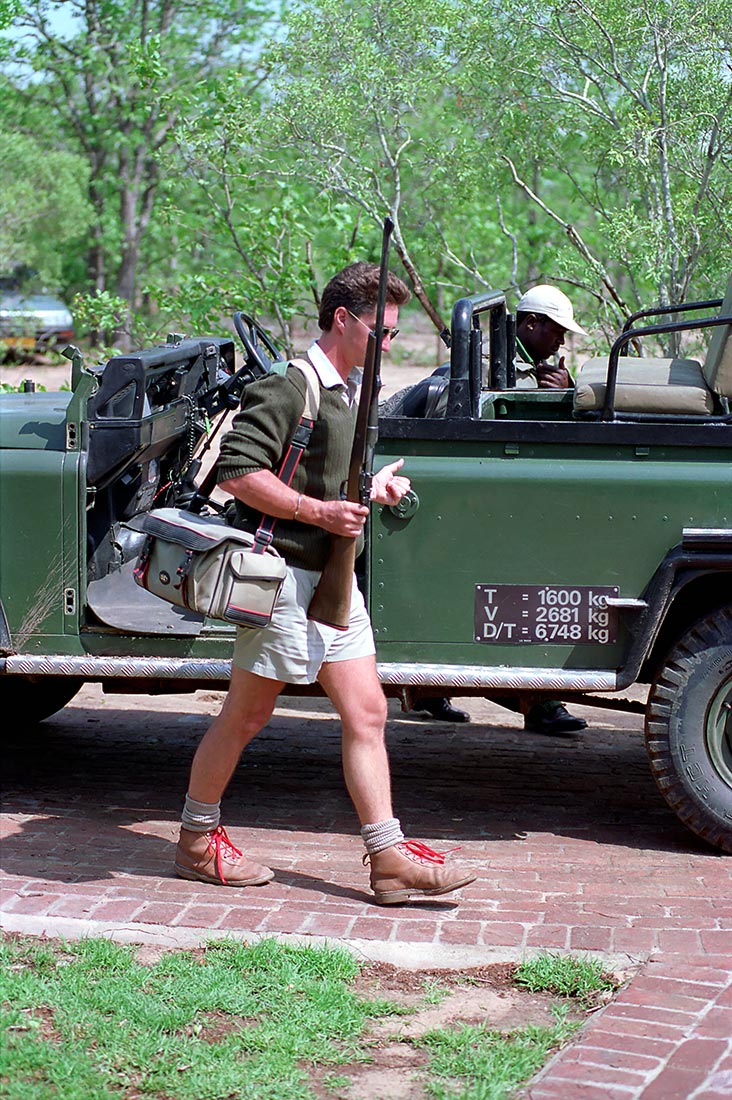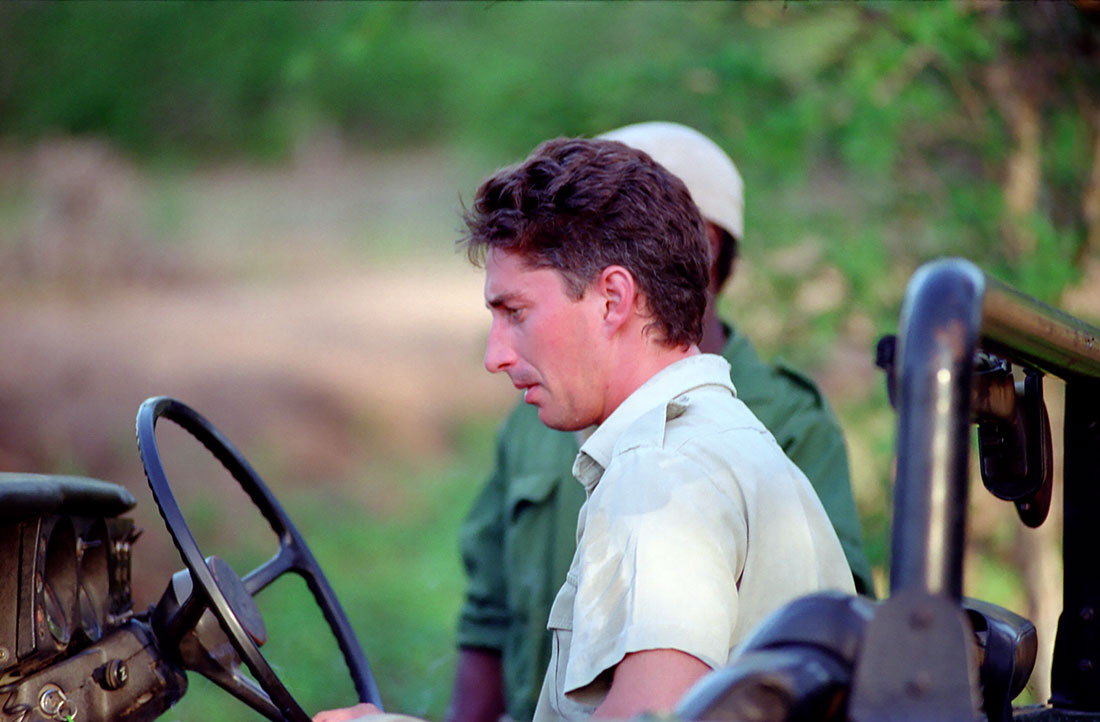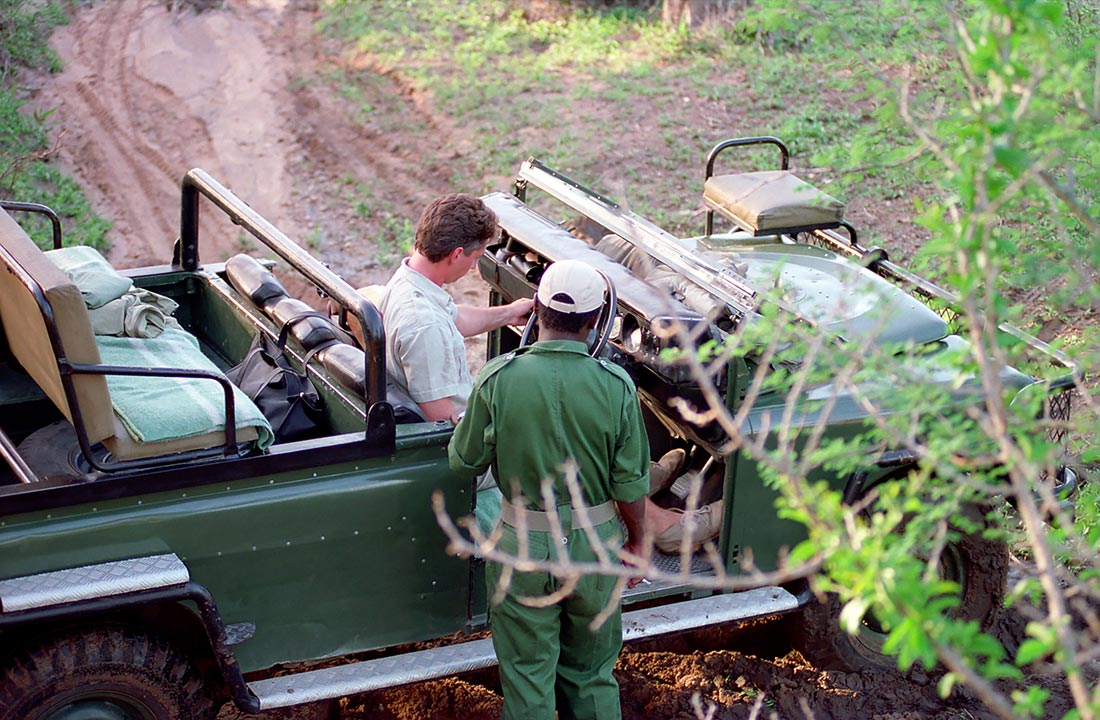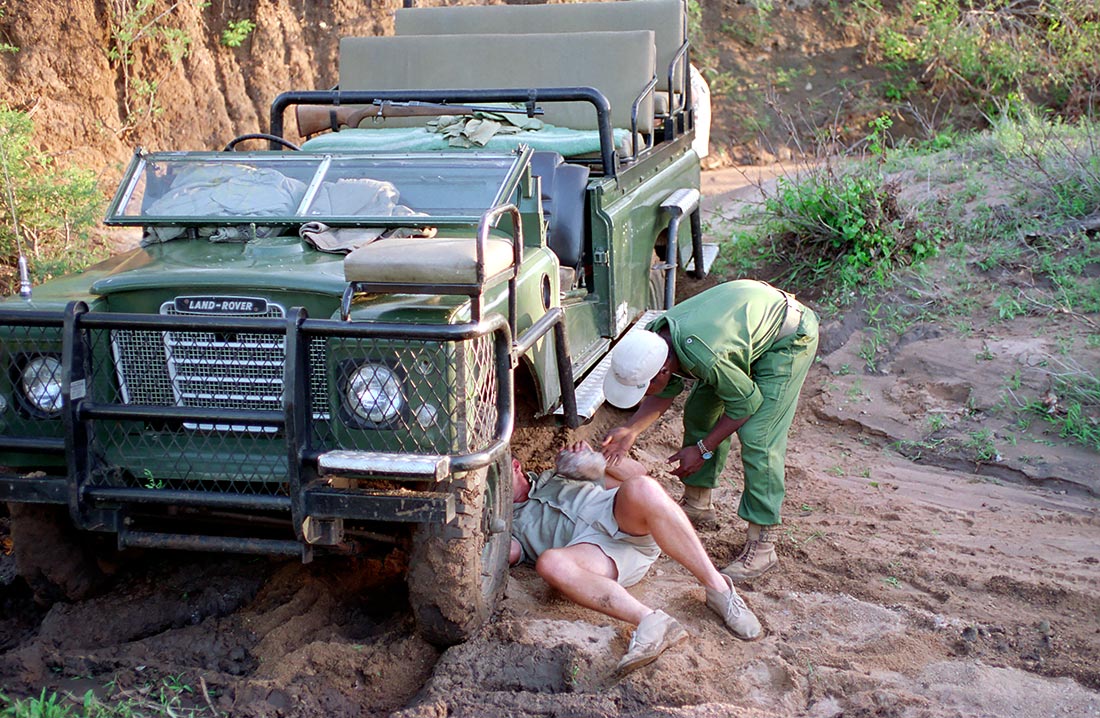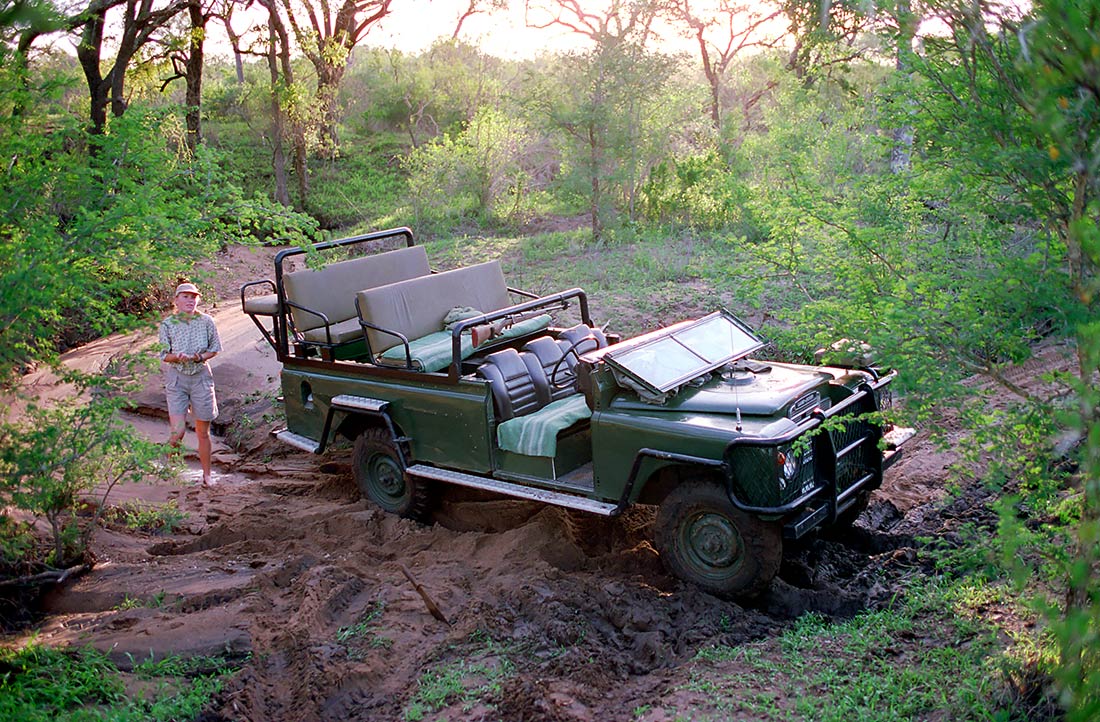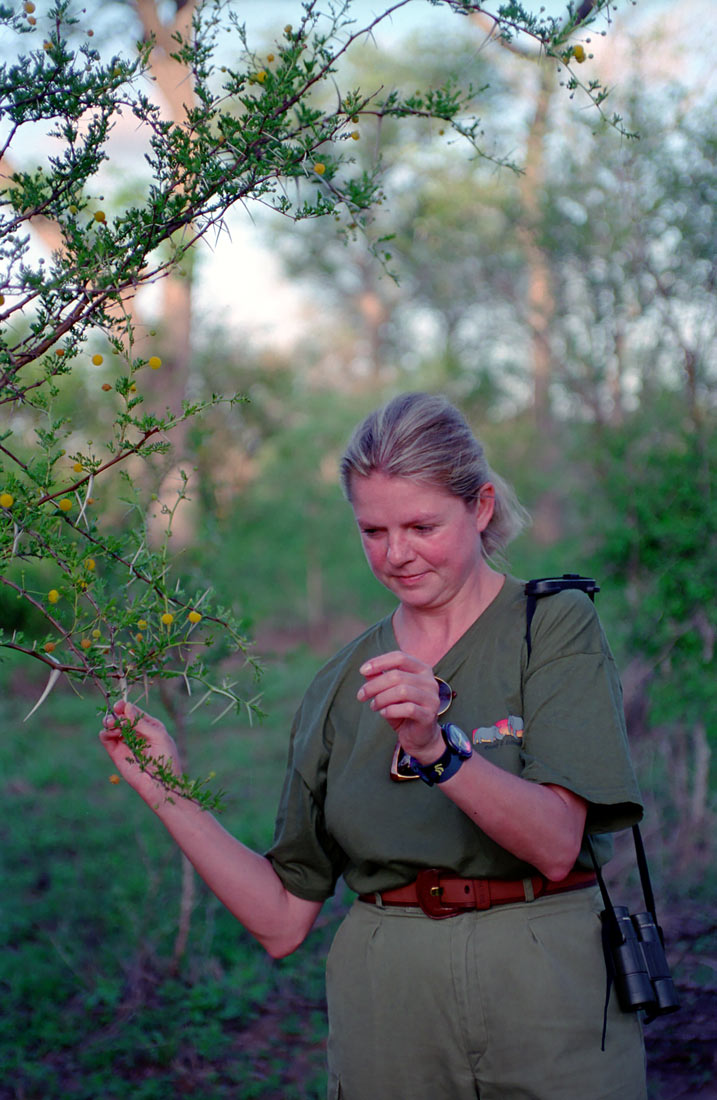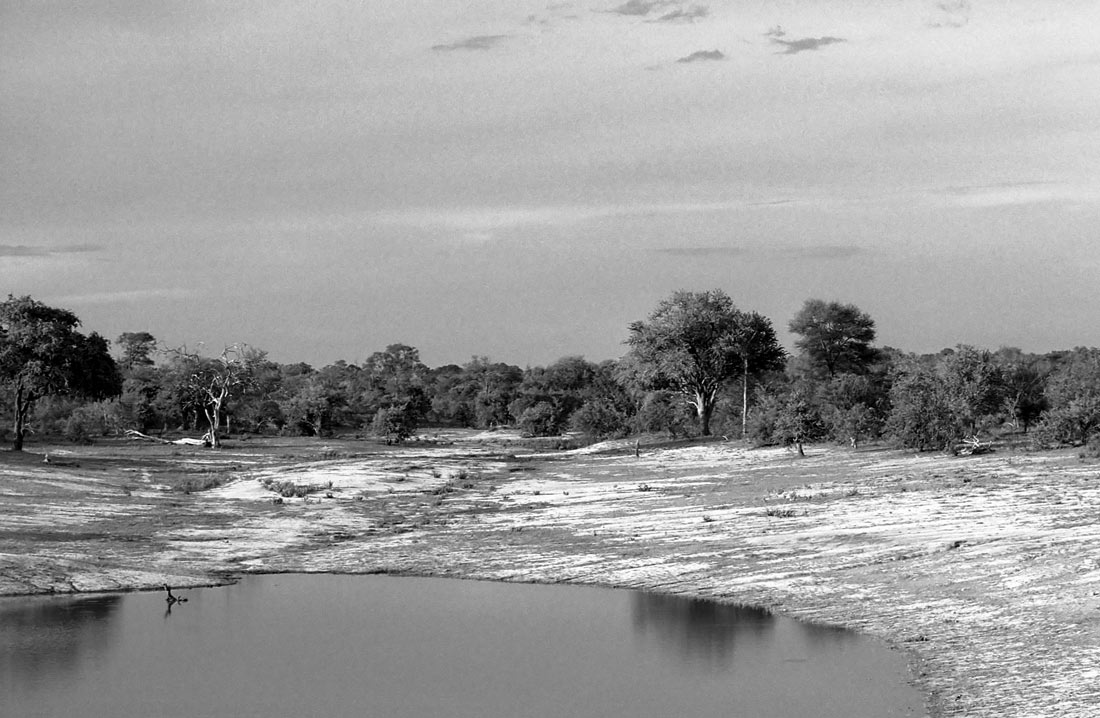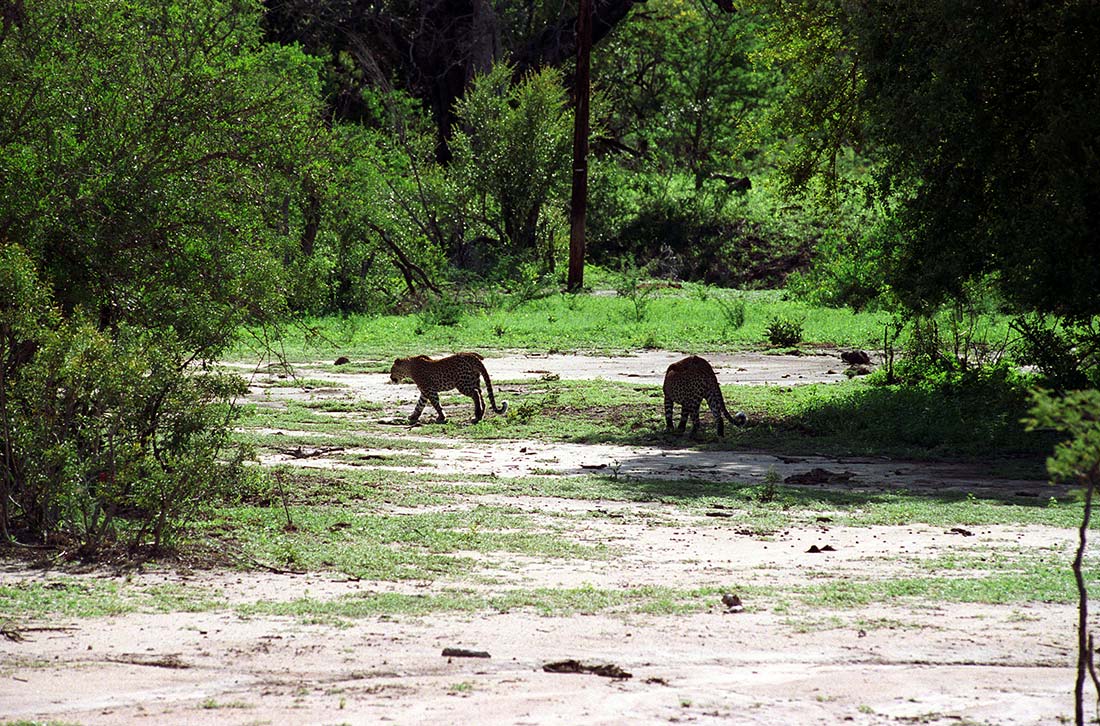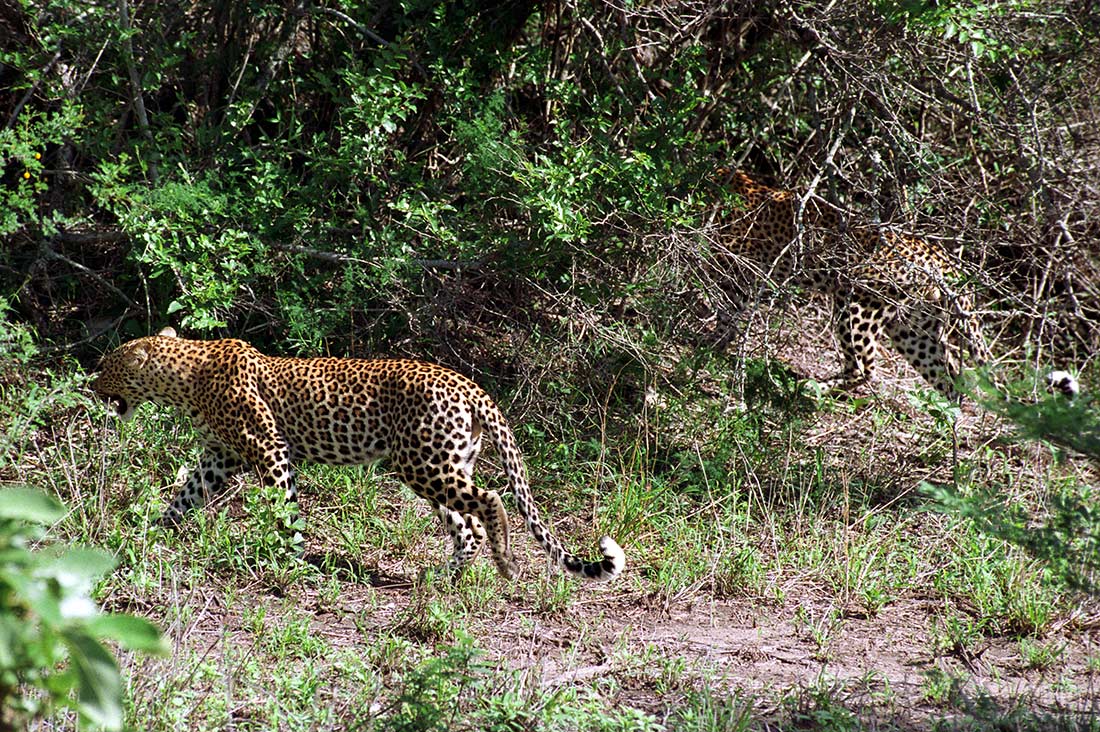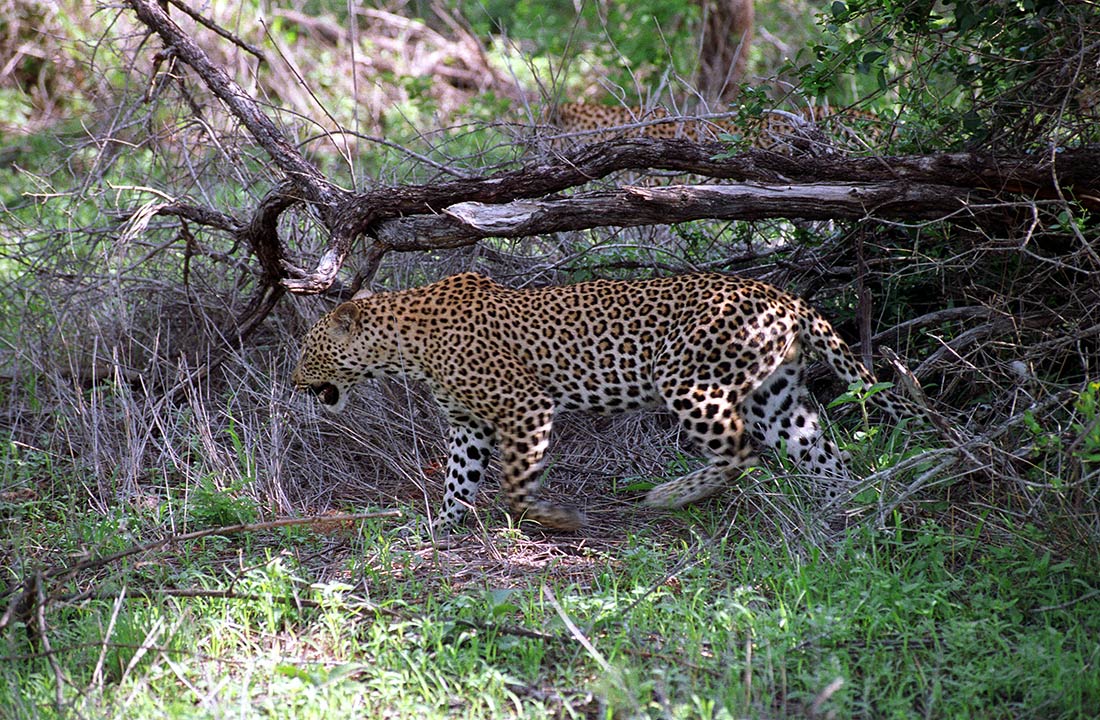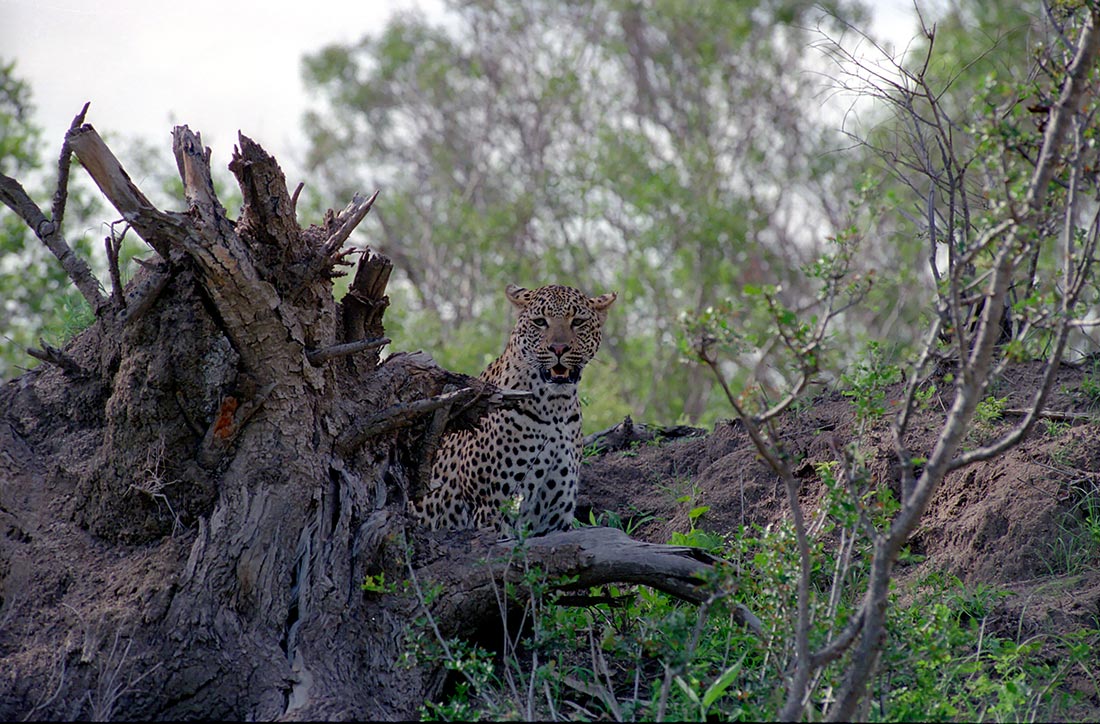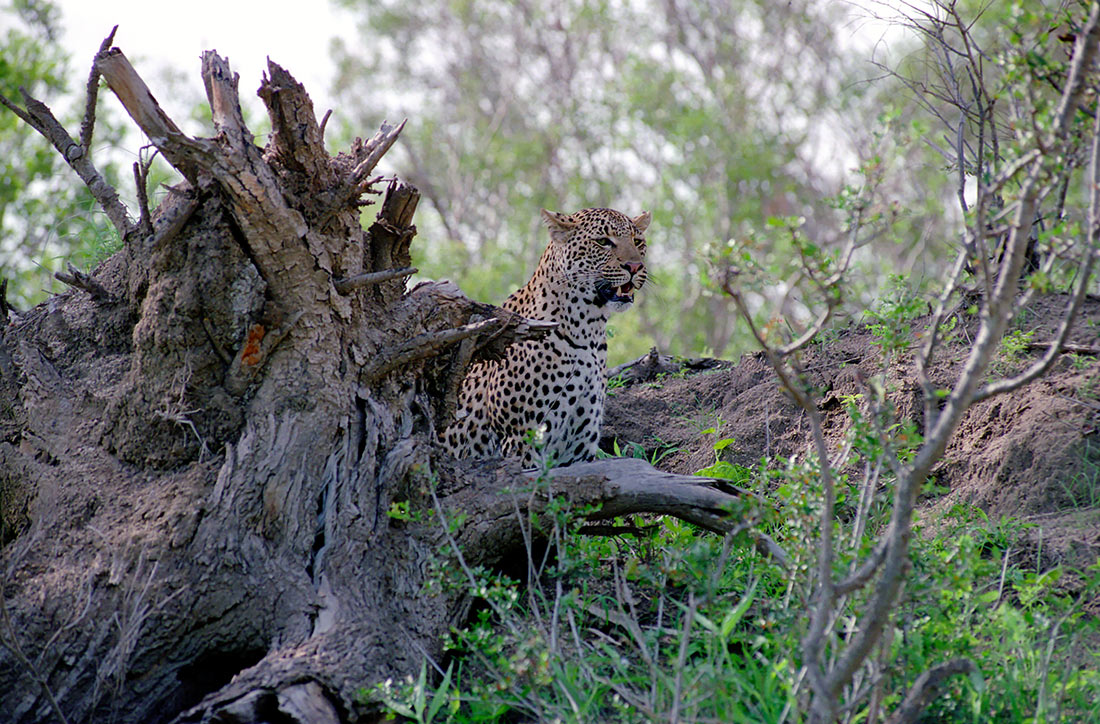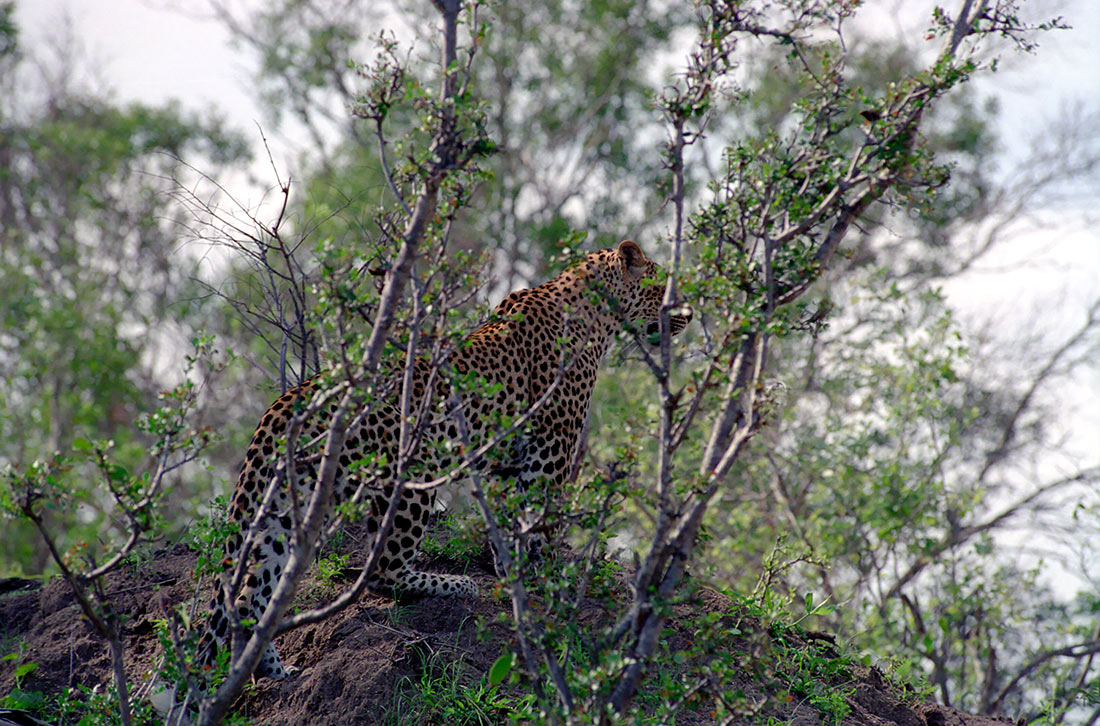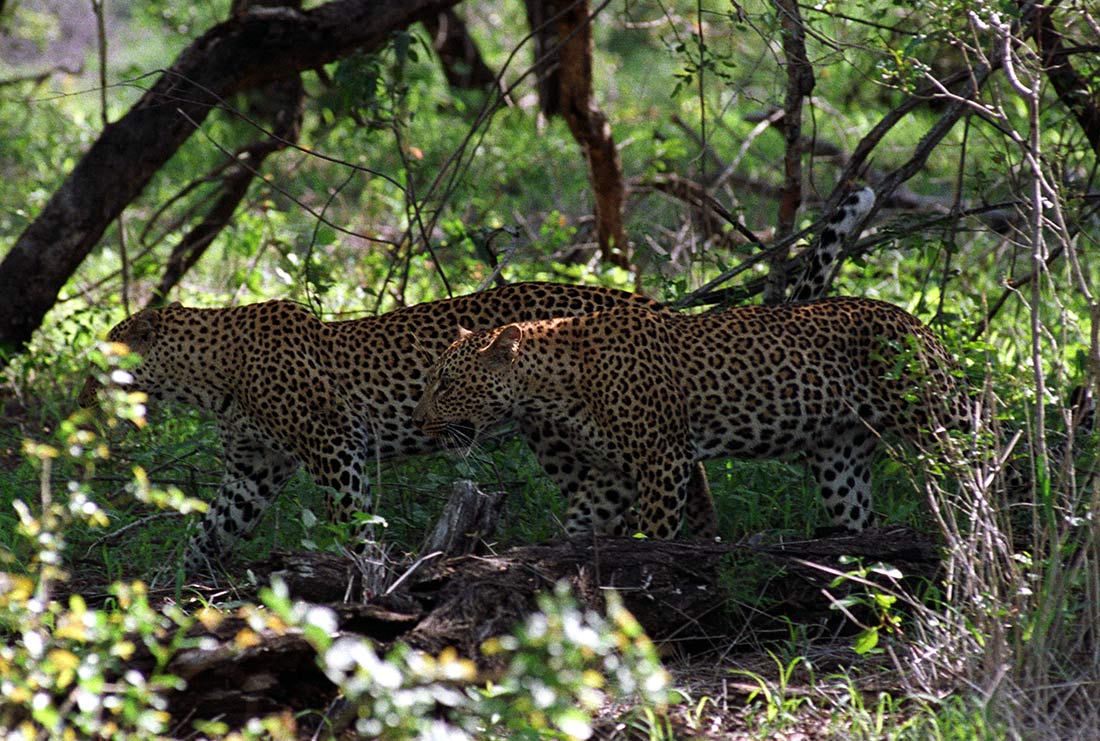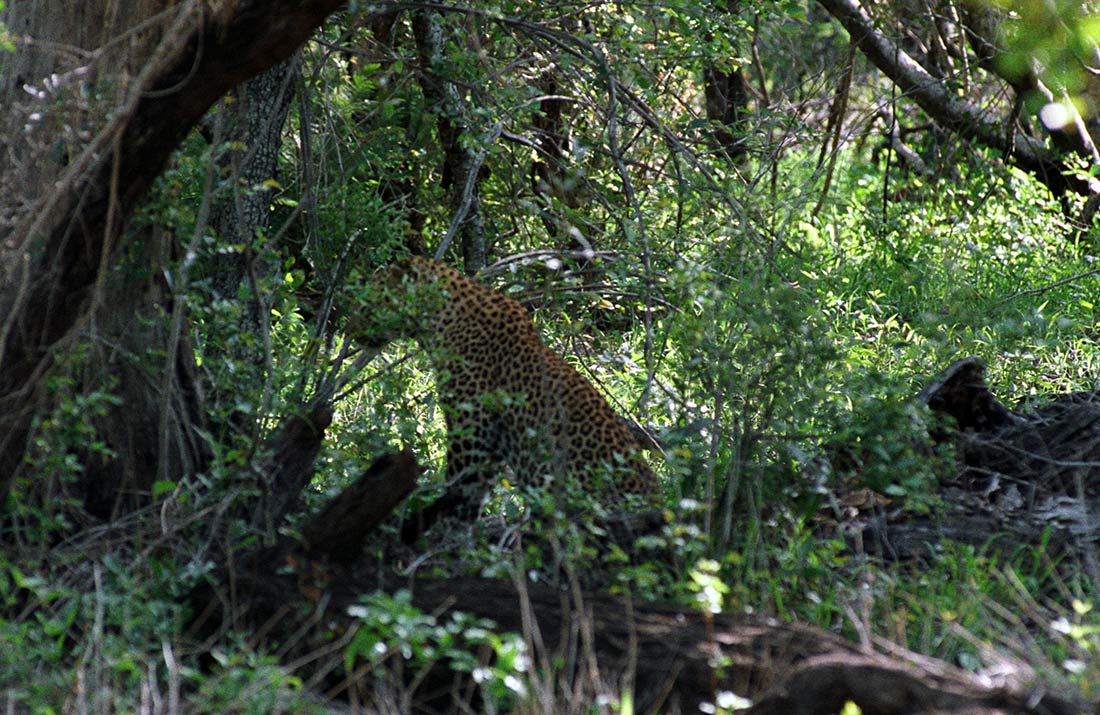South Africa – Leopards
We are in the game park of Ngala Lodge on the prowl for Leopards. Leopards are usually nocturnal and very shy animals. They are therefore not easy to observe in the wild. That is probably the reason why the leopard is probably the most widespread big cat. Leopards adapt to the living conditions optimally. They are therefore also found in the most diverse regions and are found both in the jungle and in desert regions.
The night before we sat with our ranger long after dinner over a glass of wine. He then offered us that he offers us a special experience the next morning.
He has seen traces of leopards nearby today. We are to four that day (Ranger, Helfer, Brigitte and Jürgen) looking for the leopard. The best time should be just before sunrise. So get up at 3:00 in the morning and leave at 4:00. Since this stalking is not completely safe, our ranger has already equipped himself with a rifle (just in case). After just a few kilometers, our Land Rover stops in the middle of the bush. Should this be the end of the eagerly awaited game drive?
We are disappointed, but our ranger does not give up easily. Of course, a workshop can not be found in this wilderness. Help can only be requested via radio in the lodge, which would also mean the cancellation of the safari. So we help ourselves. The day before, it rained like a bucket all night. The whole area is dull. So the repair is associated with a real mud fight.
In the meantime, Brigitte turns to botany and explores the flora of the African wilderness, especially since it has come to life again after yesterday’s thunderstorm. New plants sprout out of the ground at every turn. Nature awakens to unfamiliar flowering. Meanwhile, working hard on the Landy respectively under him. After endless attempts, we manage to get the Land Rover afloat again. The repair cost us some time, but our ranger does not want to give up the search for the leopard.
We drive through riverbeds, past waterholes that have formed after the rain and then suddenly and completely unexpectedly, our guide, who has his lookouts on the fender, gives a sign. He discovered something.
It is the leopard whose traces our ranger has already seen yesterday. Slowly, the leopard disengages from its hiding place and trudges away over a clearing in front of our eyes. All of a sudden, our guide has changed his, as he thinks, insecure front seat on the fender with a supposedly safer seat in the passenger seat next to our ranger.
The sight, smell and hearing of the leopard are exceptionally well developed. The big cats are also excellent climbers and swimmers. Bushveld leopards rarely weigh more than 70 kg on average. Nevertheless, they are able to raise even big prey animals like Impalas into trees, in order to bring them to safety from other predators.
Our guide tells us that he has seen a leopard dragging a young giraffe weighing about 100 kg several feet high into a branch fork. Leopards are absolute loners. Male and female animals live in separate territories. However, the area of the male usually crosses several female areas. During mating season, a leopard mates with all the fierce females of its hunting grounds.
Suddenly we see how another Leopard peels out of the thicket. It is very rare for two leopards to go hunting together. In this case, there are two younger brothers who seem to share the chances of a successful hunt together. We follow the two animals in their quiet stalking through dense shrubs, across the open savannah and through rivers.
Once we lose them in a closed thicket that we can not pass. But as we drive around the shrubbery and arrive on the other side, we see it again. Majestically, without paying any attention even to the slightest glance, the two leopards approach their destination. On your prowl for prey they are up to 30 km away. We have already seen a lot of animals in the wild. These majestic, supple big cats are indeed a special experience. Our ranger did not promise us too much. Again and again the leopards move silently through rough terrain. So we follow the two Leos more than two hours. Occasionally we think we have lost her. We believe slowly, they play with and cat and mouse. After we have avoided an embankment, we suddenly see it again in front of us. Calmly one of the leos sits with his nose in the weather …………
Leopards can exist wherever they find small and medium prey and good cover. Leopards travel singles throughout their lives. Their contacts are limited mostly to the mating season and in females to the time of rearing of the boys. The Auzucht is solely a matter of the females. After a gestation period of 100 days 3 – 4 boys are born. The boys are dark and sparsely spotted. When they are 2 years old, they leave the mother and look for their own territory. The male leopard has a territory of about 18 – 65 km2. The territory of the female covers an area of 10 – 30 km2. Male leopards are 60 – 70 cm tall with a body length of about 200 cm. Their weight is about 60 kg. The females are about 180 cm long and weigh 30 – 50 kg. The leopard can live to be more than 20 years old. Leopards go prey mainly at sunset or shortly after sunrise. In their hunt they travel up to 30 km. The Leo consumes a wide range from beetles to antelopes as well as warthogs, jackals, rodents, snakes etc.
Avber now we want to continue reporting on our safari, here is the second part of our travel report:
One of the two leopards has apparently taken weather on a prey. From his elevated place, he has a good overview of what’s going on around him. The brother secures the terrain on the other side of the terrain. Now it is time. The prey is spotted.
It is a small impala. Alertness, tension and the sense of the right moment combined with the speed of a hunter are the basic prerequisites for a successful hunt. The hunt begins. One of the two leopards is about to jump on the prey. The Impala has no real chance when two leopards hunt together. The bite in the neck brings death in no time.
Subsequently, the prey is first transported to the next tree to bring it to potential envious people to safety. After a short while, the Impala is brought into a thicket that seems safe enough for the leopard. We follow the two brothers in due distance, but then we can approach to the Aufbruchplatz with the Land Rover up to a few meters.
Here we sit rooted in the open Landy, while the leopards divide the prey among themselves. A leopard breaks up the impala and guts it. We clearly hear the breaking of the bones while snacking. A noise that sends a shiver down my spine today. The second Leo is waiting a short distance in the nearby thicket and secures the area. Obviously we are not considered enemies, otherwise it can not be explained that we can observe the action from a distance of 5 meters. The whole procedure takes over 2 hours. We are sitting in the now blazing sun in the open Land Rover. The camera is always with me as well as the ranger, the rifle is within reach. Time goes by without us realizing that a big sunburn is already forecasting. We do not perceive all this because we follow the scenery so spellbound.
On our way back we are happy to have experienced this sad and at the same time cruel hunt. She will never forget us.


